6 Tactics to Improve Your App Store Optimization
App Store Optimization has become increasingly important now that there are over 3 million apps currently listed in Google Play and the Apple App Store. It’s absolutely vital that you’re optimizing your placement within these marketplaces and know the top-performing tactics. In this guide, we’re going to look at some of the more effective app store optimization (ASO) techniques and how you can use them in your mobile strategy.
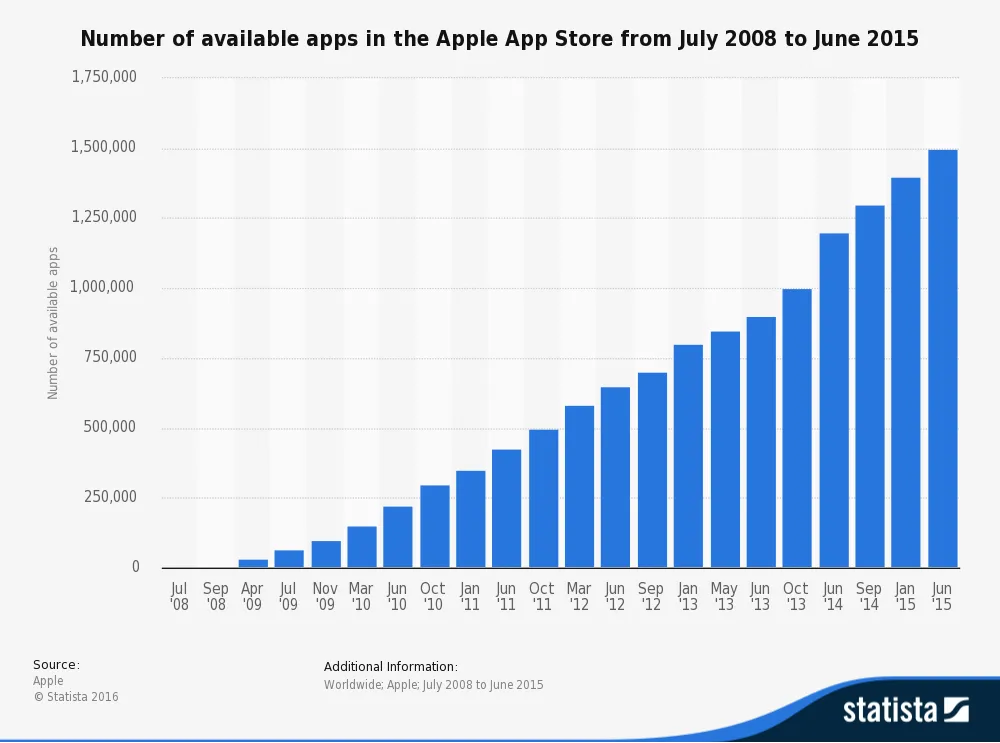
(Source)
Though guides about app store optimization tend to be dominated by advice for game developers and B2C eCommerce retailers, in this post we’re also going to include information for those supplying B2B services and products. Even if your app is secondary to your main offering (in the case of desktop SaaS, for instance), there are still significant opportunities for discovery. Equally, if your app is part of your core value proposition, it’s important that you make it as easy as possible for customers to find and download.
You can see from the graph below that business apps constitute the second biggest category overall. Many businesses that have a presence on the major app stores boast significant download counts and utilize these platforms to drive new customers. So, though mobile games hold the largest market share, there are still opportunities for B2B companies..
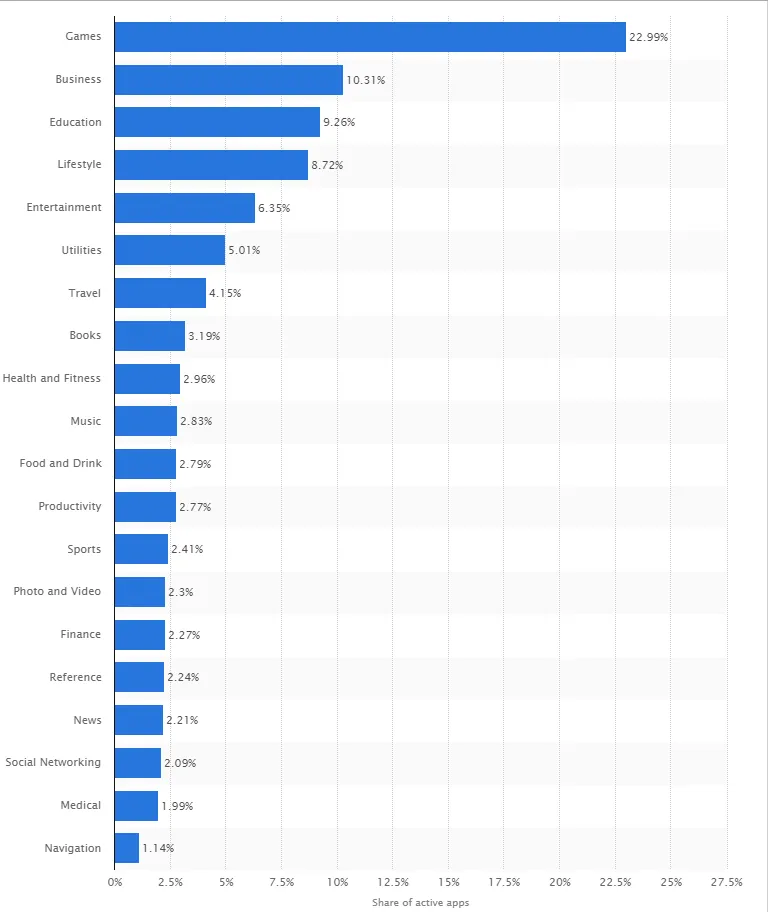
(Source)
The screenshot below shows an app that is directly targeted at B2B users and garners a significant amount of downloads through’ “organic” traffic from the stores on which it’s listed. It’s a good example of how the right optimization strategies can attract both new customers and leads.
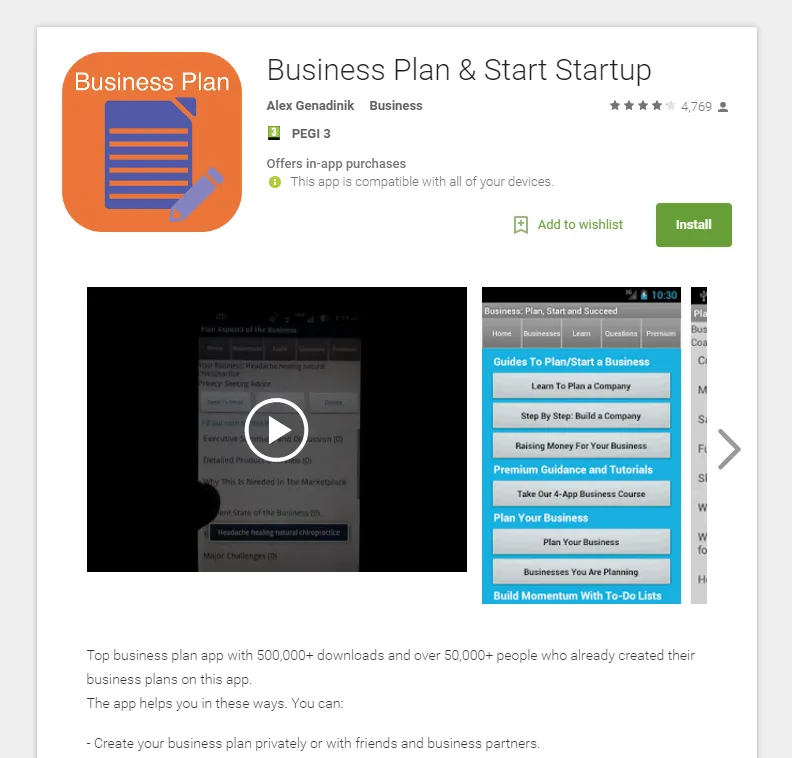
(Source)
With all of that said, let’s take a look at the techniques themselves. We’ve taken a broad approach in the sense that anybody promoting an app - whether it’s aimed at B2C or B2B audiences - can craft a robust, effective and testable strategy. Not all of the advice will be applicable to all publishers, however, so pick and choose based on your own unique needs.
1. Understand why ASO (app store optimisation) is important
App store optimization is about designing your apps’ download pages in the various app stores (Google, Apple, Windows etc.) so that they rank higher in their search results. The purpose of doing this, whether you are working on behalf of a company or as an individual, is twofold: to drive new users and to help pre-sold customers, such as those who may have heard about your app on another website, find it as easily as possible. Once people have arrived, a well-designed page with a good description and enticing images will also encourage them to download, rather than prompting them to look elsewhere.
The page of project management app Wrike is a good example of optimisation done well. You can see that the title includes both the brand name and an explanation of what the app does.
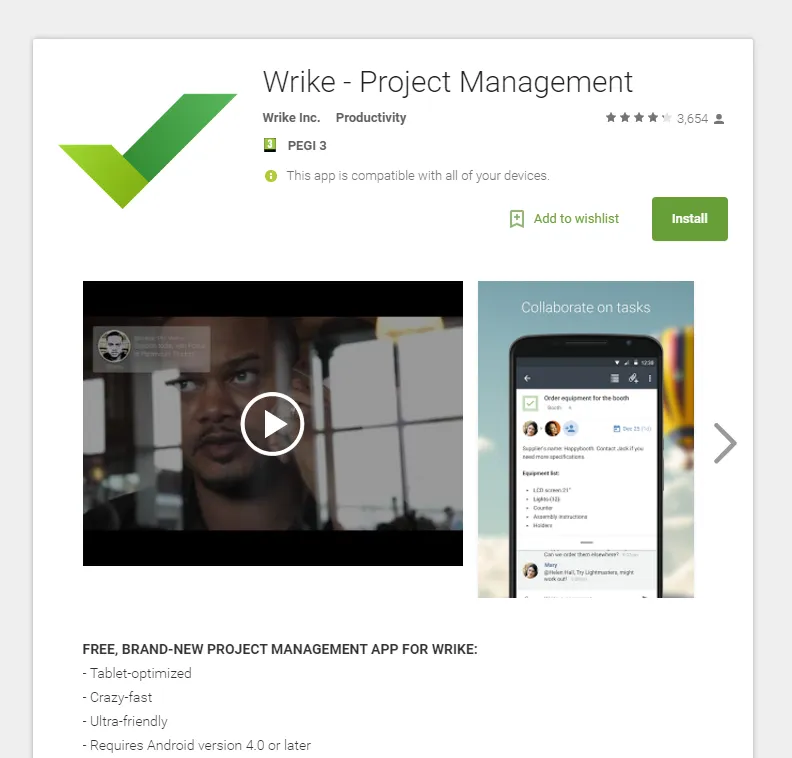
(Source)
But, you might be asking, is ASO really that important?
The graph below shows that the majority of people, 63% of total users, discover new apps by browsing in the app store. In-store search is the largest channel for discovery that’s available to publishers seeking to drive new downloads. So the short answer is yes, it is important.
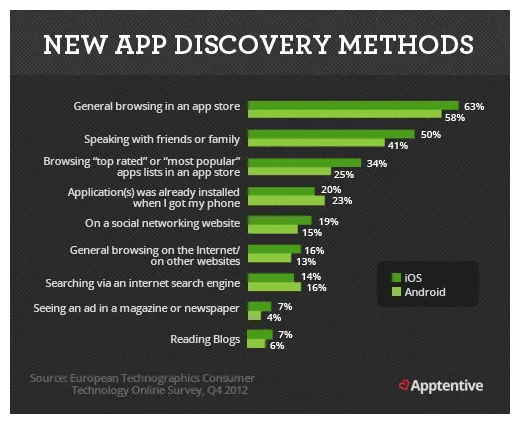
(Source)
It’s also worth mentioning again that if you’re not looking to gain significant numbers of new customers, many of your current users will search for your app through one of the app stores, so it’s important that you make it as effortless as possible for them to find it. Bindo, a POS SaaS system, does this effectively by including its brand name and its main keyword in the title, making it easier for its users to recognize it amidst a sea of “bingo” apps. .
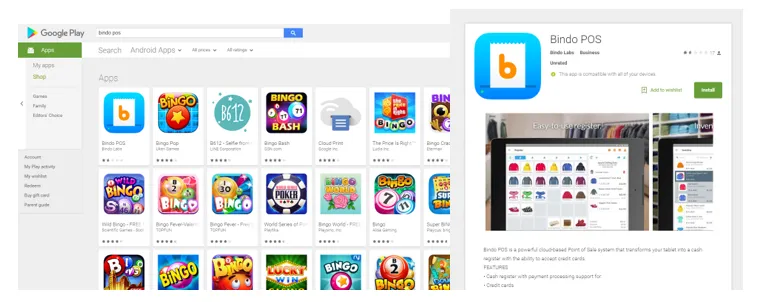
(Source)
The first step to effectively optimizing for the app store involves compiling the appropriate data. Let’s dive in...
2. Use quantitative and qualitative research
Start by gathering information in the key areas listed below. You will use the collected data to craft rank-worthy, enticing pages later on in the optimization process.
- Keywords - To effectively put together an effective title and description, you’ll need to know which keywords people are using to search for the kind of product that you sell. There are two main ways to gather this data. The first is by researching your competitors. The second, and by far the more effective, is through keyword research. Brainstorm a list of all the potential keywords that potential customers might be using and run them through Google’s Keyword Planner. You can then run with the top-performers.
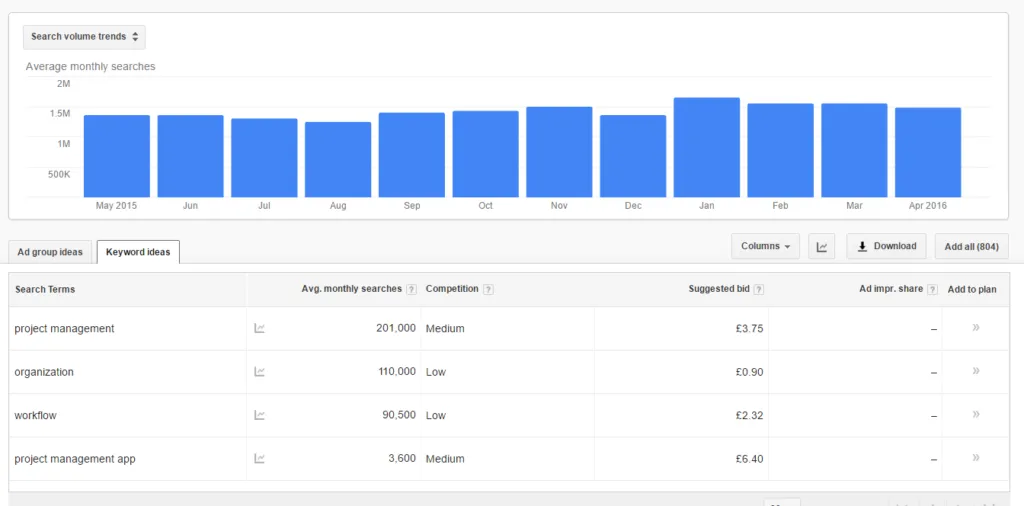
(Source)
- Pain points and audience language - A solid understanding of your target audience’s pain points is vital for crafting a good description. Remember, your goal isn’t just to notch up the visitors to your page, you also need to persuade them to download after they’ve arrived. Using language that connects with their particular pain-points as well as writing your copy in a tone that resonates with their needs can be major factor in determining whether or not they hit that download button. Online communities (Quora in particular), reviews of similar apps, and your own customer feedback are all valuable sources of information in this regard.
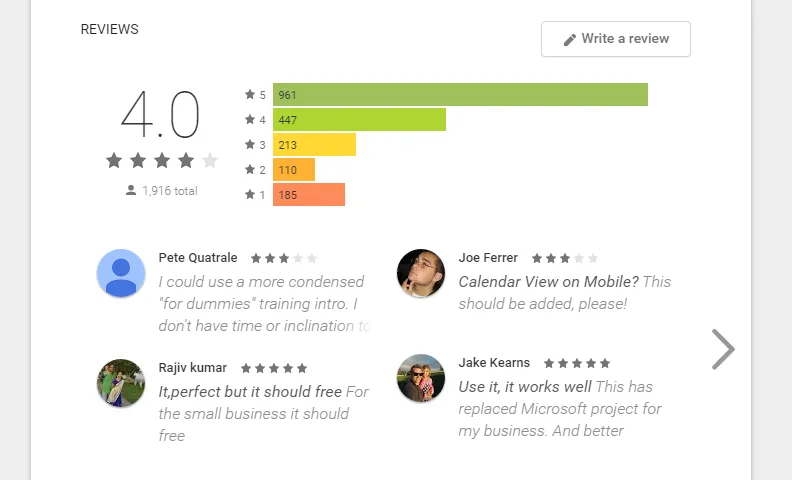
(Source)
- High-performing images - Nothing looks more unprofessional than a cluster of ugly, pixelated pictures. I’ll often navigate away from a download page if the screenshots for an app are of particularly low quality. Pick out your most attractive features and include screenshots of them along with explanatory text overlays. Trello, shown in the screenshots below, do this very well.
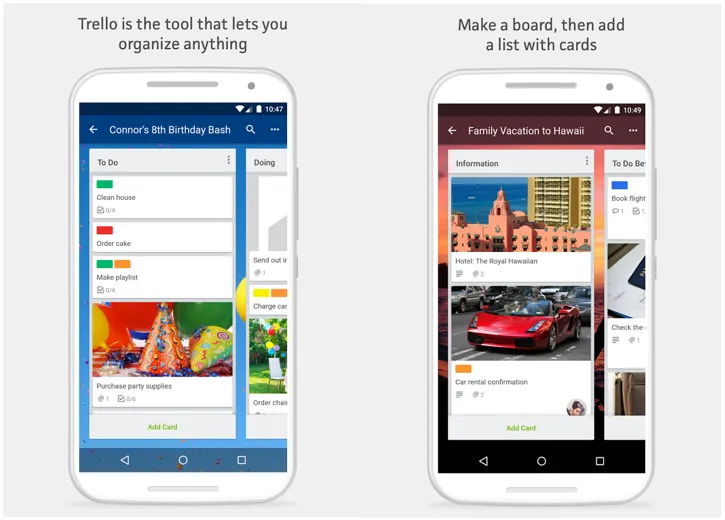
(Source)
3. Understand app store ranking factors
App store algorithms work in a similar way to those used by search engines. The trick if you’re looking to optimize your rankings, is in understanding, as best you can, the various ranking factors that different app stores use and designing your page to fulfil as many of them as possible.
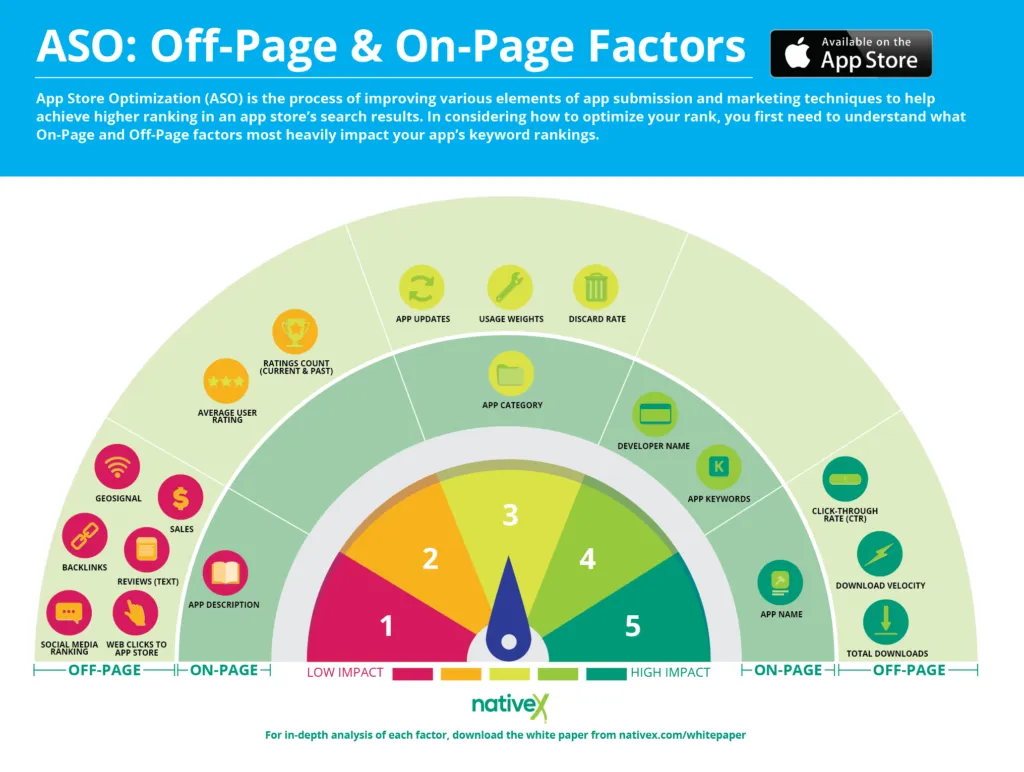
(Source)
Listed below are the most important ranking factors, all of which you can take steps to improve through ASO:
- Keywords in title
- Keywords in description
- Publisher name and reputation
- Number of of downloads
- Quality of ratings
- Number of comments
As with any search engine, these factors will change over time (as you can see from the illustration below), so it’s important that you stay up-to-date with news and information about new factors. Search algorithms are a closely-guarded secret but keeping your finger on the pulse of the optimization community, and adjusting your own pages accordingly, can provide you with a key competitive advantage.
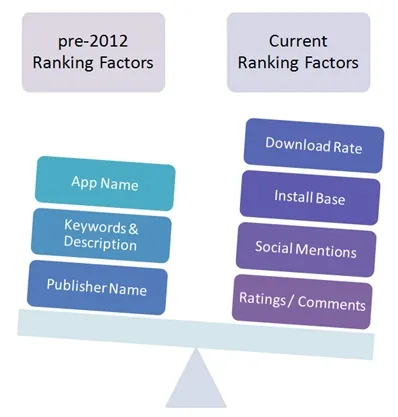
(Source)
4. Craft your page: the anatomy of an app store listing
When optimizing for the app store you will generally be targeting two groups of people: new customers and existing users. That’s why it’s important to craft your app page with both in mind.
Follow the advice outlined below to optimize each part of your listing:
- Title - The title is the most important part of your app listing and your main keyword should be included here alongside your brand name (this will make it easy to find for both current and potential customers). It’s important that you spend some time thinking about what the best possible title for your app is, as changing it later can be detrimental, potentially causing a shift in rankings and confusion to those linking through from a third-party site. Smartsheet provides a good example of a brand name and keyword title combo.
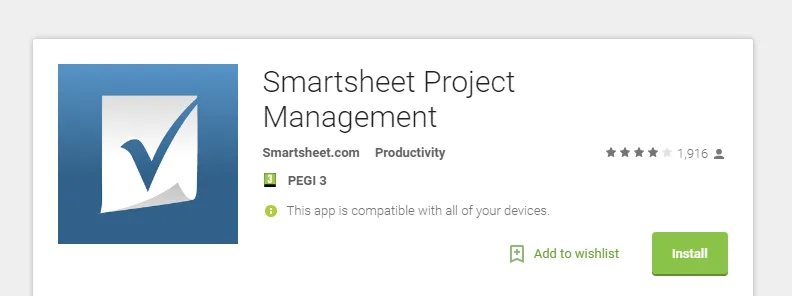
(Source)
- Description - Focus on the first two or three sentences! This is your opportunity to explain to your readers exactly what your app does, the benefits it provides and why you’re better than your competition. You can also include a more detailed feature list and a call-to-action. Both Google Play and the Apple Store have a description limit of 4000 characters so there’s plenty of space to include all the details you want to. .
- Images and videos - Images are placed above the descriptive text on an app’s download page so they’re the first thing a new visitor sees. Only the first three images render without the user having to click through so make sure your most important benefits are included in these. Text overlay also adds a nice dimension. This is also one of the most obvious areas to use A/B testing. Take a look at the example from Todoist below. They’ve included a video with beautifully-designed graphics.
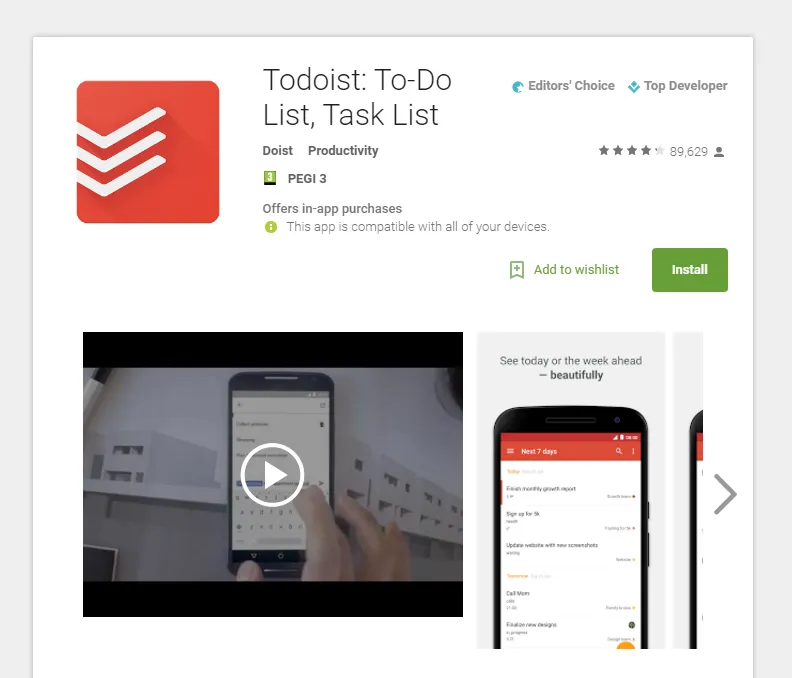
(Source)
- Logo - Logos are far more important than most publishers think. When a searcher scrolls through the results page for a keyword they've entered, they’re faced with a stream of little square icons. Often, they’ll pick an app based on a snap-decision about which logo they prefer. It’s worth investing in a snazzy logo and split testing the performance of different ones.
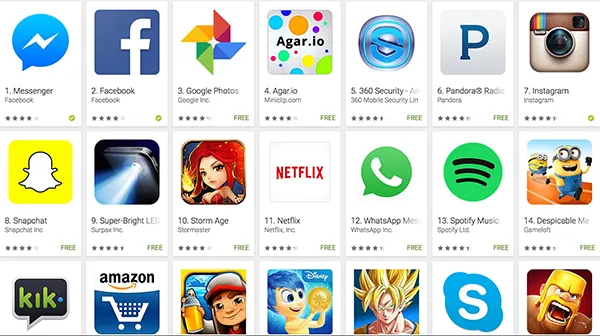
5. Drive Reviews and Ratings
After you have put together a page that can act as a foundation for top rankings, your next job is to bolster other important factors - namely the number of reviews, ratings and downloads - by driving traffic.
Here are some of the best ways of notching up these important stats:
- Third-party publicity - Having your app featured on a major news or app review site can drive tremendous amounts of traffic. Often, this is the way that new publishers gain huge numbers of new users in the early stages of launching a new app.
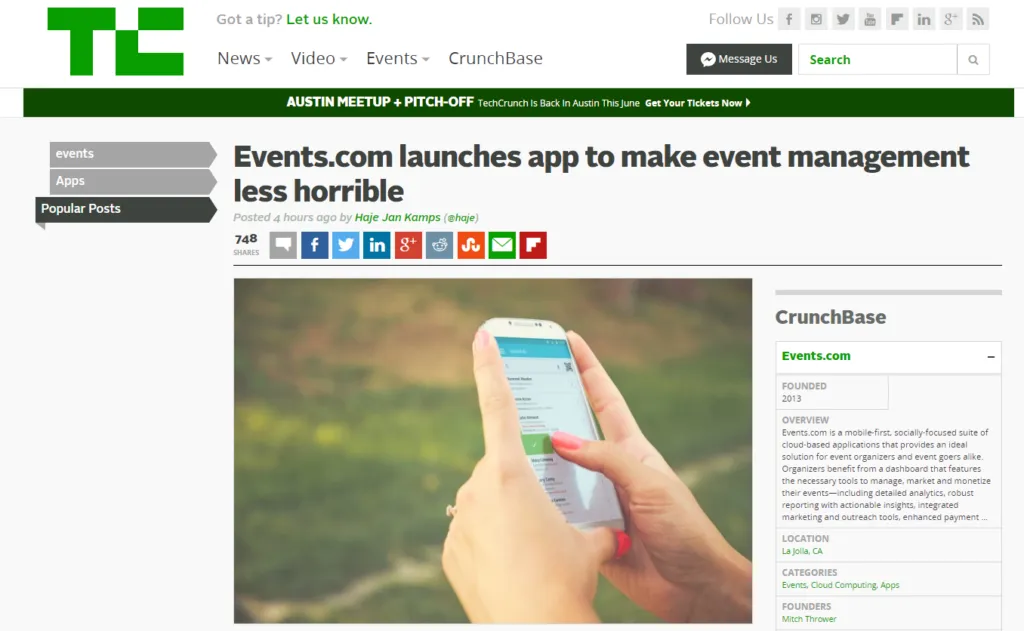
(Source)
- Your own user-base - Send out a request to your own users asking them to review your new app. Offering a reward to members of your mailing list is one of the best ways of providing an initial boost. Aweber is an example of a B2B company that advertises their app to already-acquired customers.
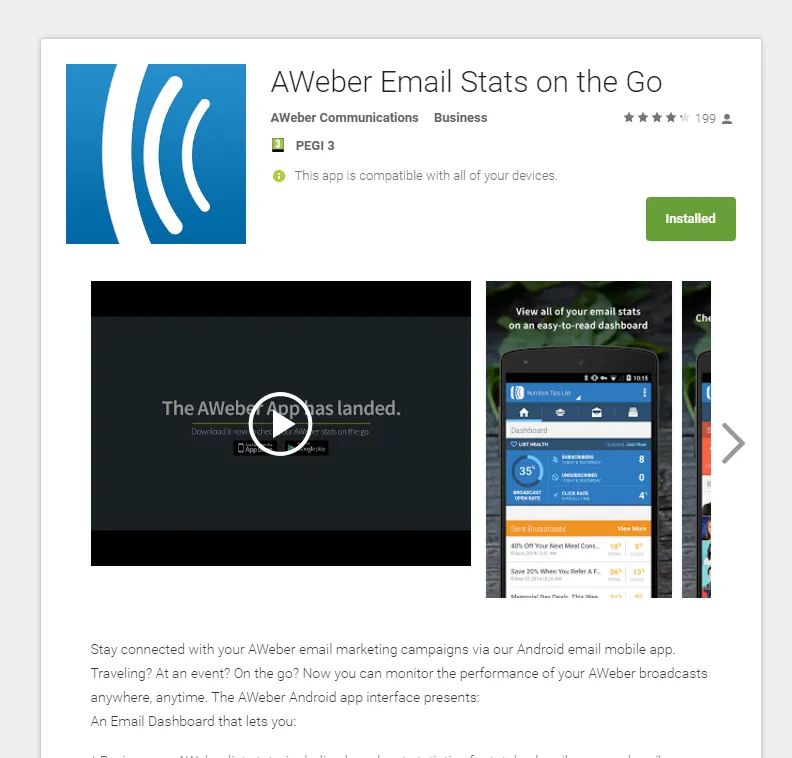
(Source)
- Paid reviews - One of the easiest (if ethically dubious) ways of increasing download figures, or of garnering positive reviews, is to pay for them. You can use sites like UpWork or Fiverr to quickly get genuine, high-quality reviews.
6. Localize for International Markets
This is hands-down one of the best ways to increase the reach of your app across a range of untapped markets. There’s a little-known concept called “MVL” that stands for minimum viable localization. It basically involves translating your title and description (and any text overlay in your images) to another language and submitting it to the corresponding foreign app store(s). If you rank successfully and traffic increases, you can take this as a cue to provide a full foreign-language app. See the example from Badoo below.
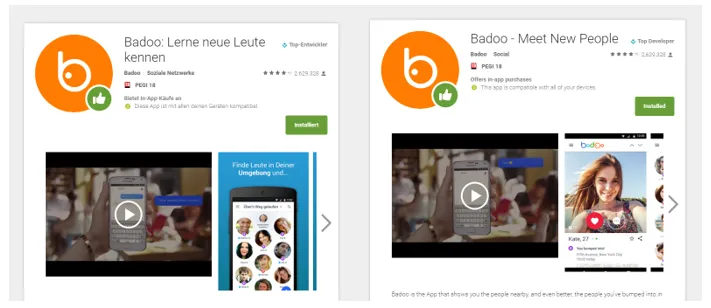
(Source)
This tactic won’t be suitable for everybody, of course, but if you think your product can be transferred across digital borders, then the rewards can be huge.
Conclusion
It’s easy for app publishers to baulk at the idea of app store optimization. The market is incredibly crowded and there are a myriad of different, sometimes obscure factors that need to be taken into account. The reality, however, is that once you have a well-defined process you can take advantage of significant new opportunities.
By implementing the strategies and tactics outlined here, everything from proper keyword optimization to minimum viable localization, you’ll be positioning yourself for more exposure, more downloads and, most importantly, more customers.